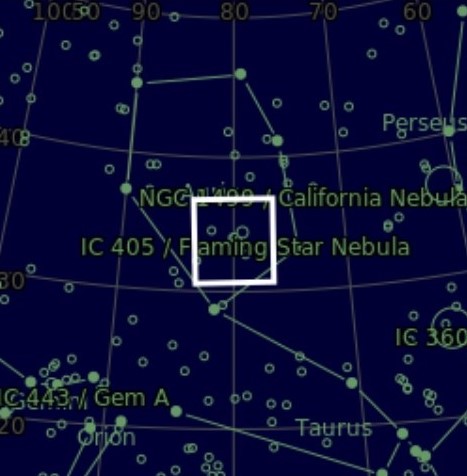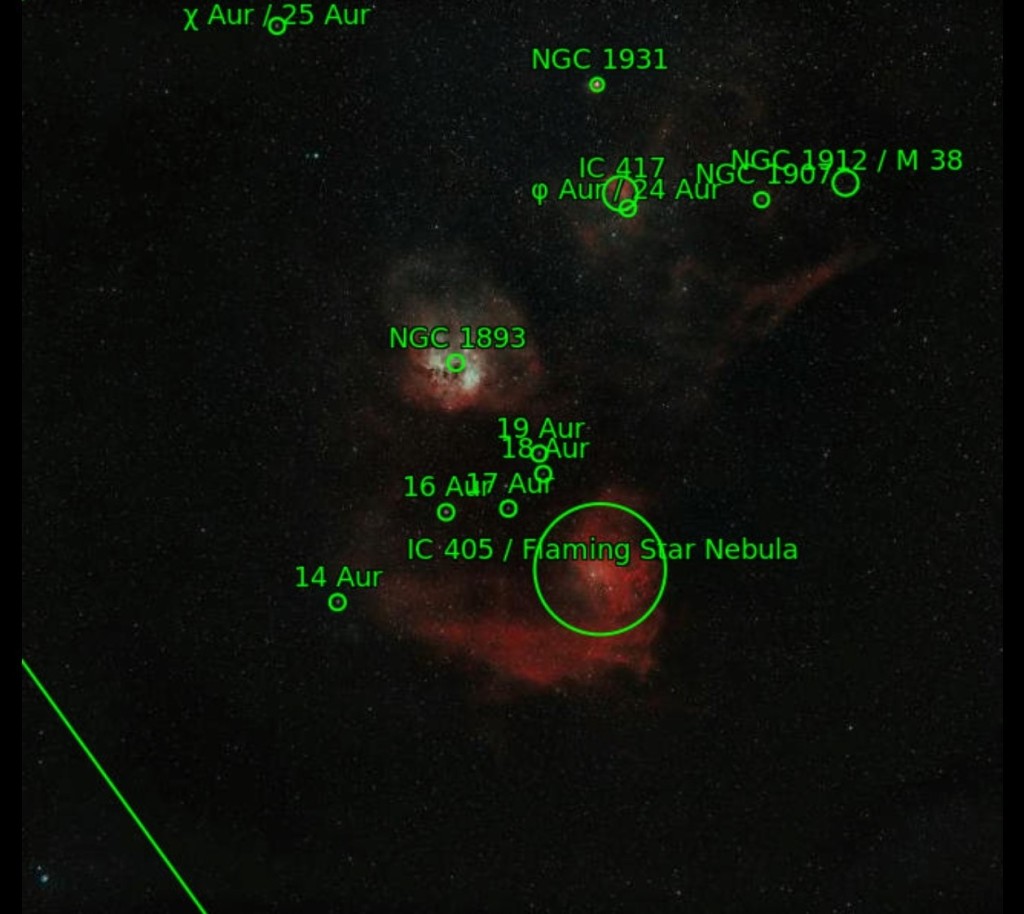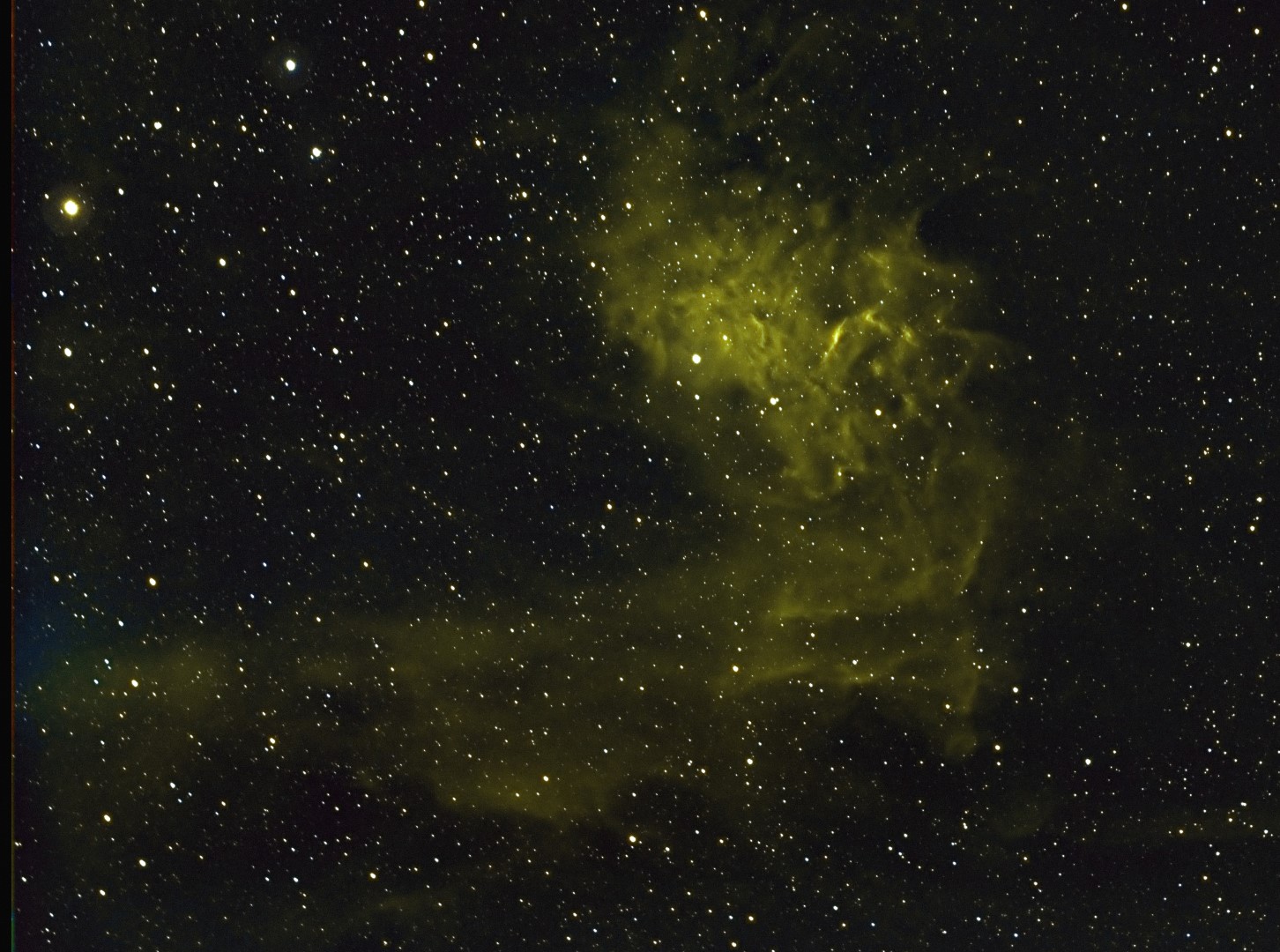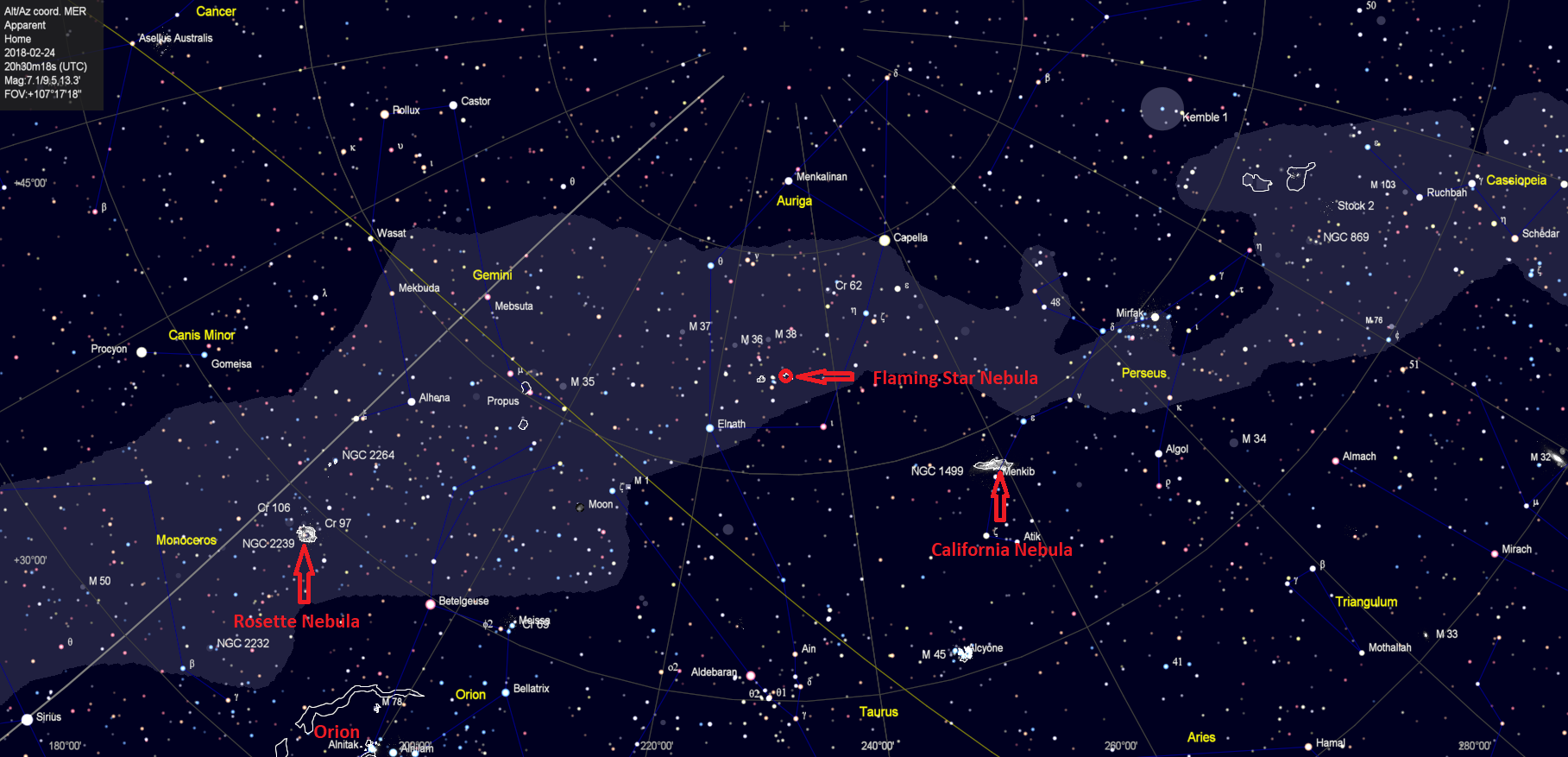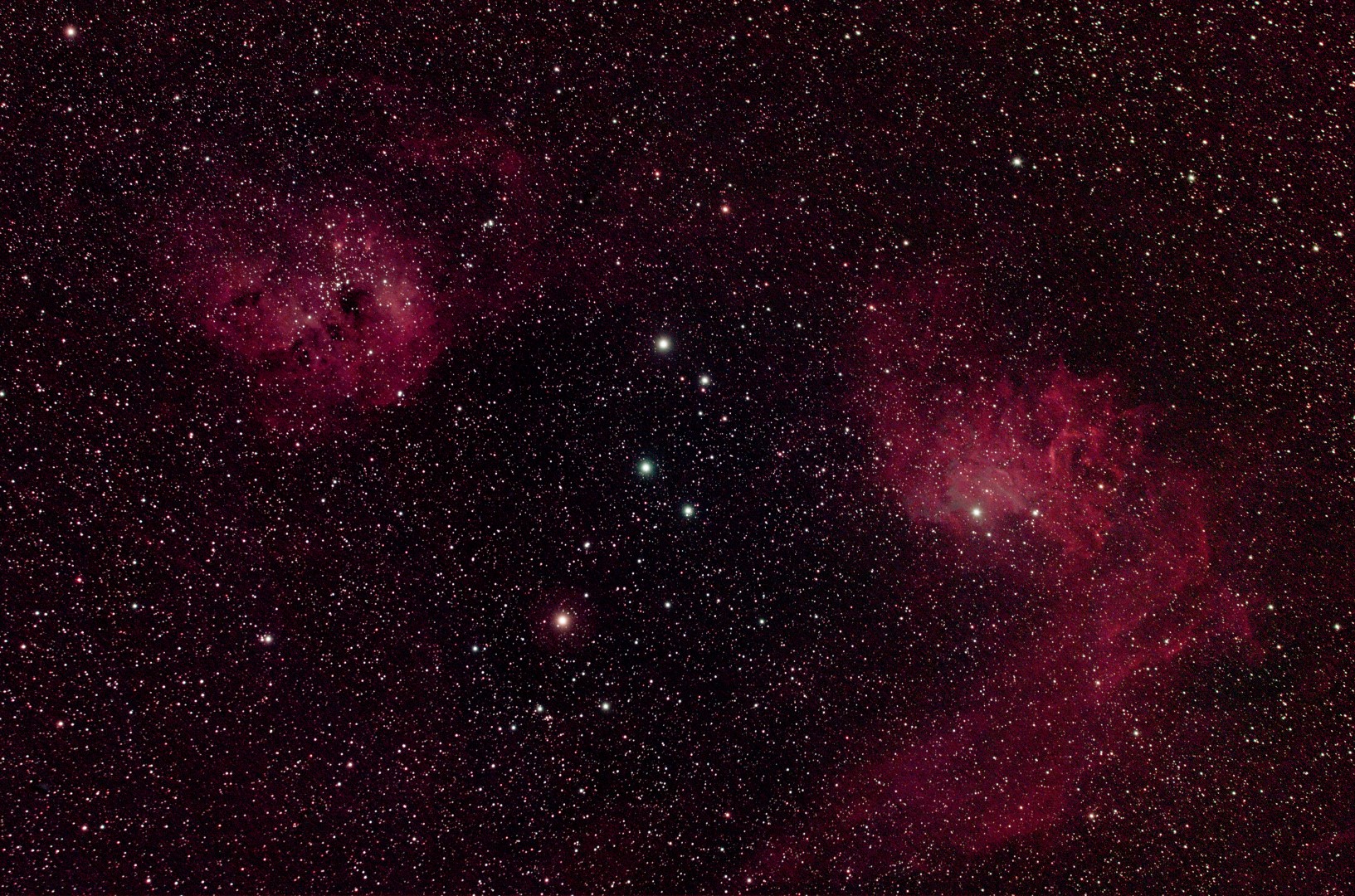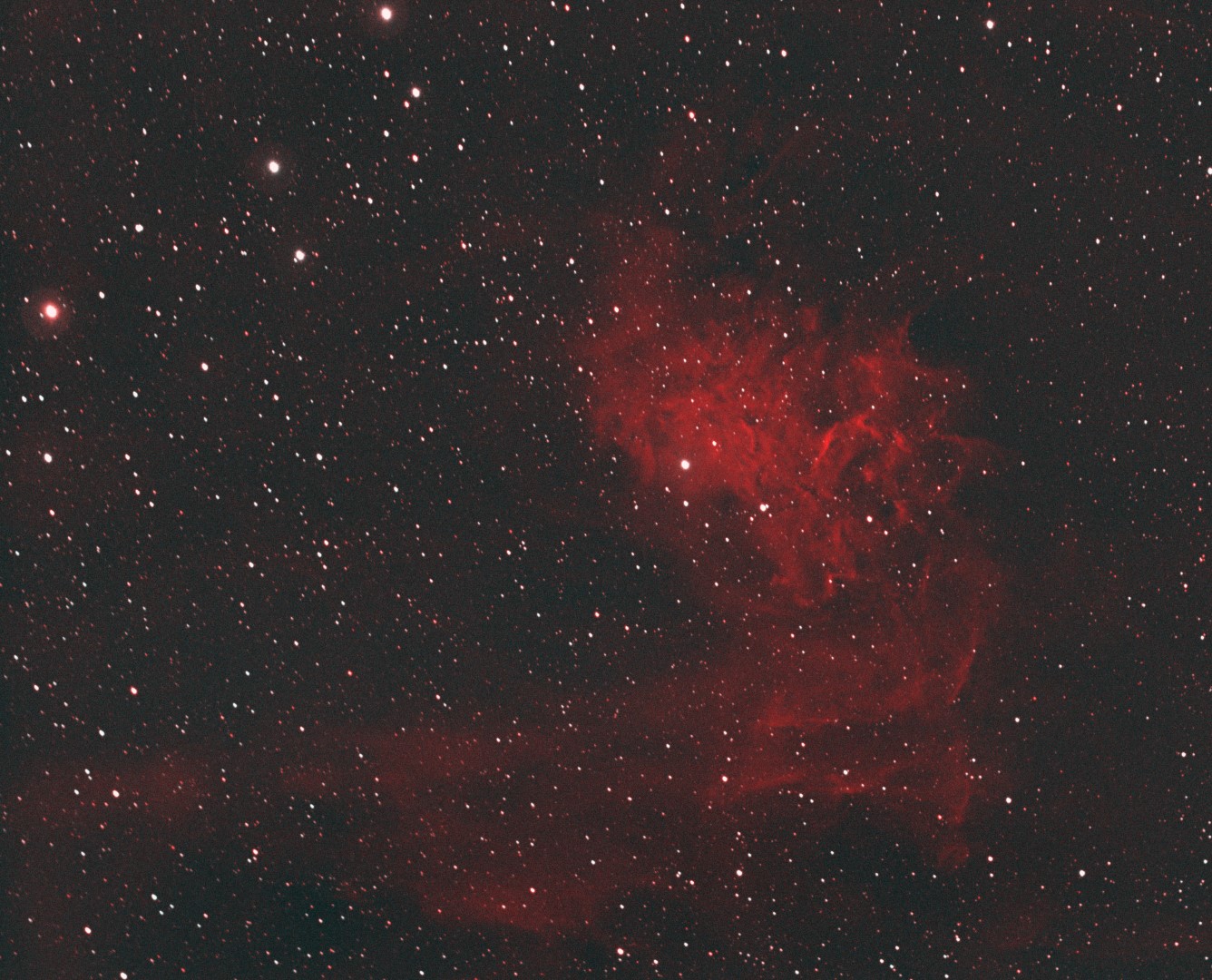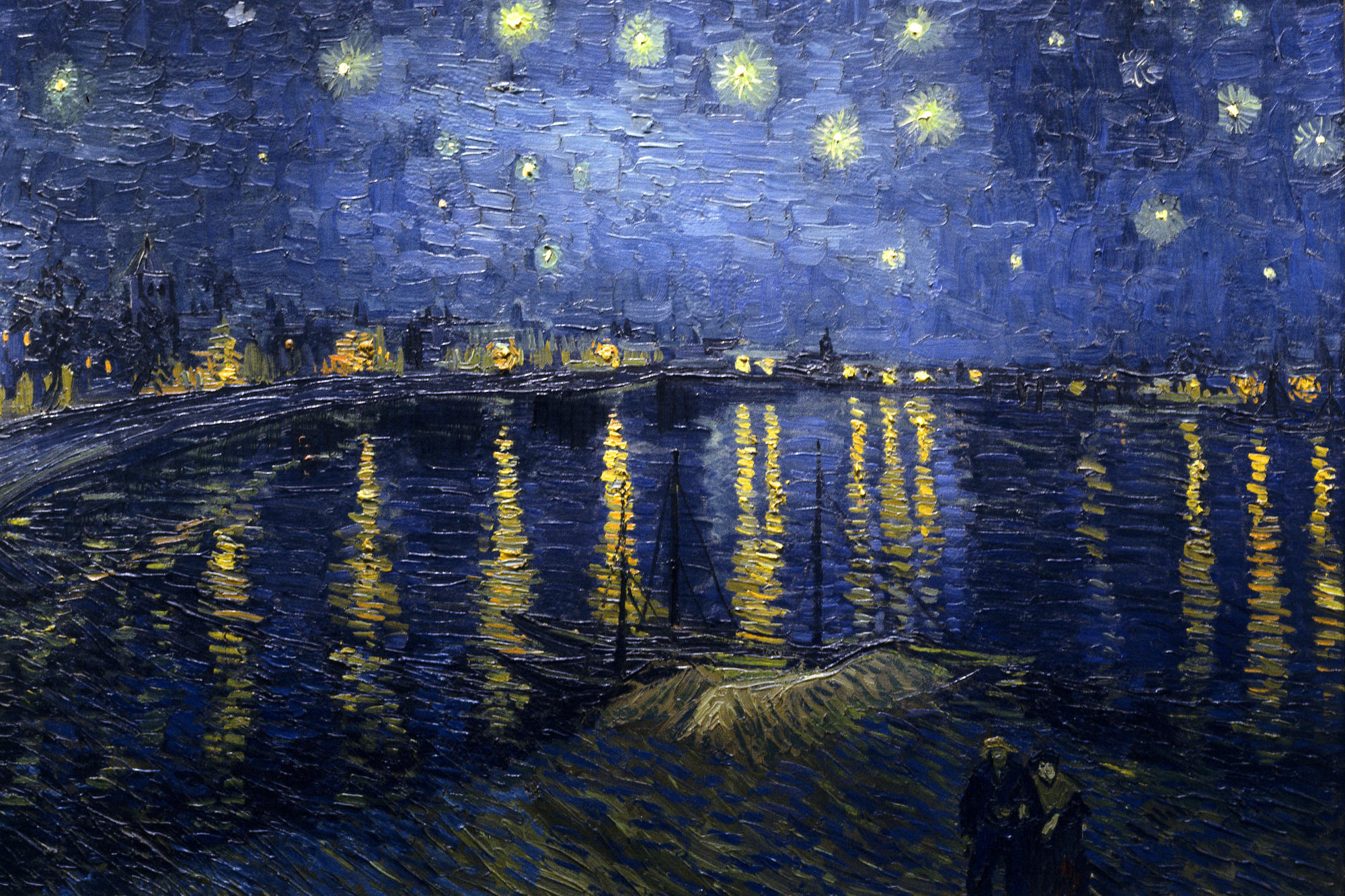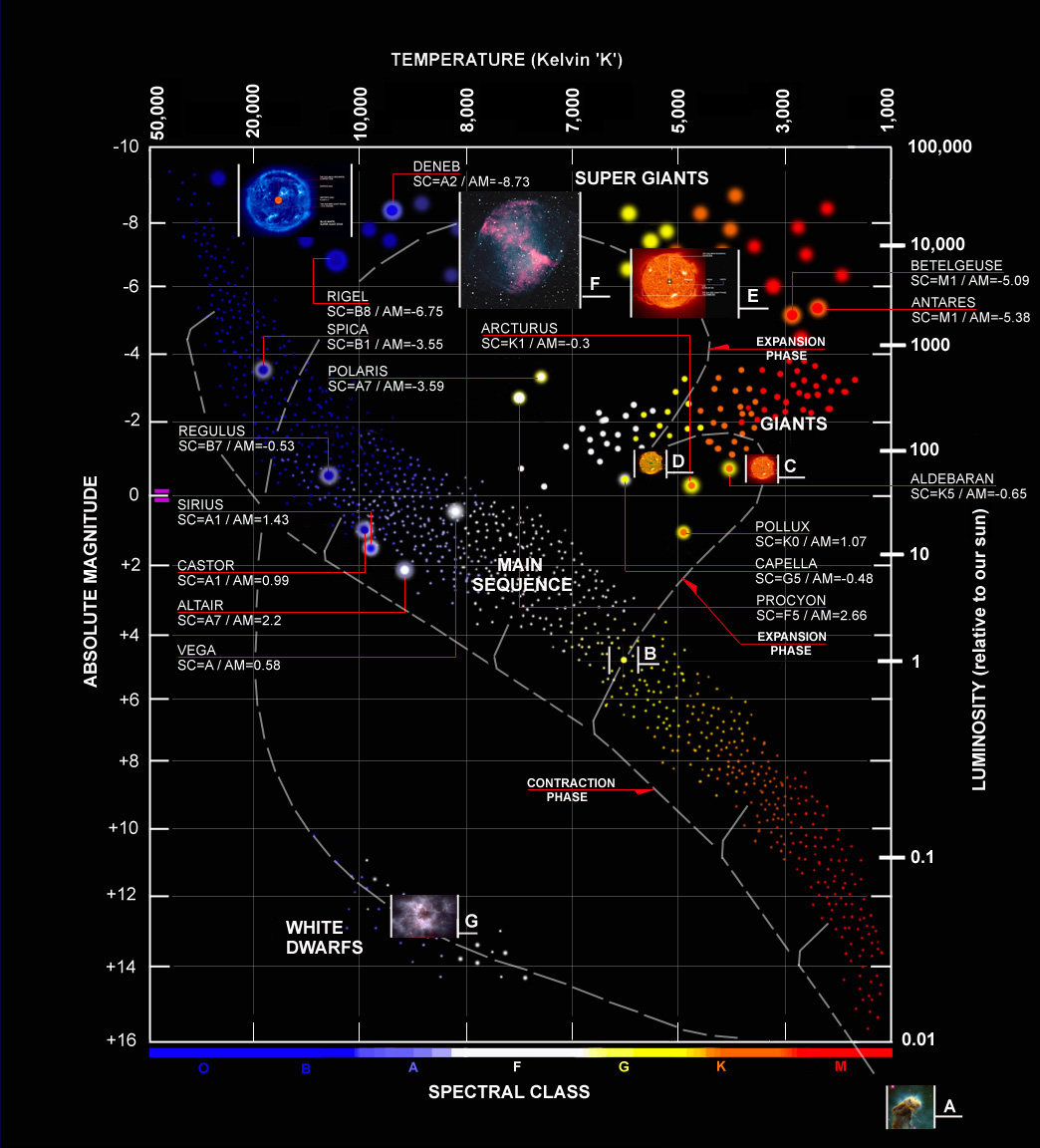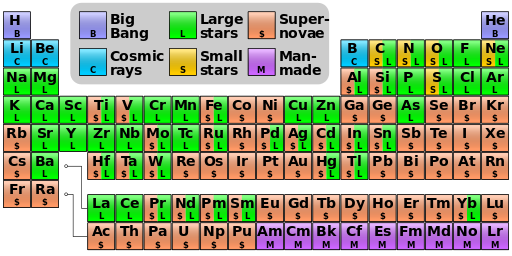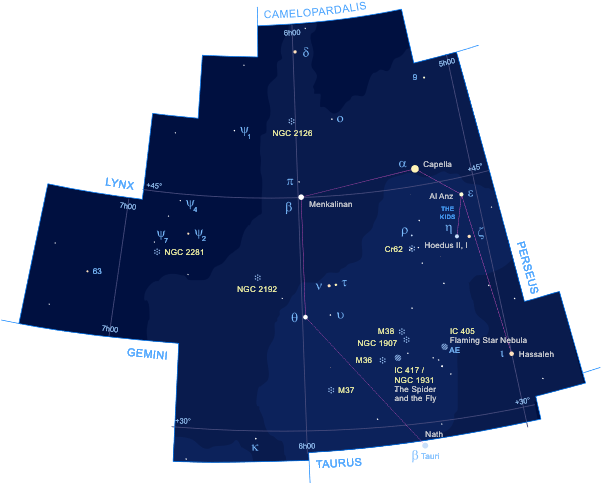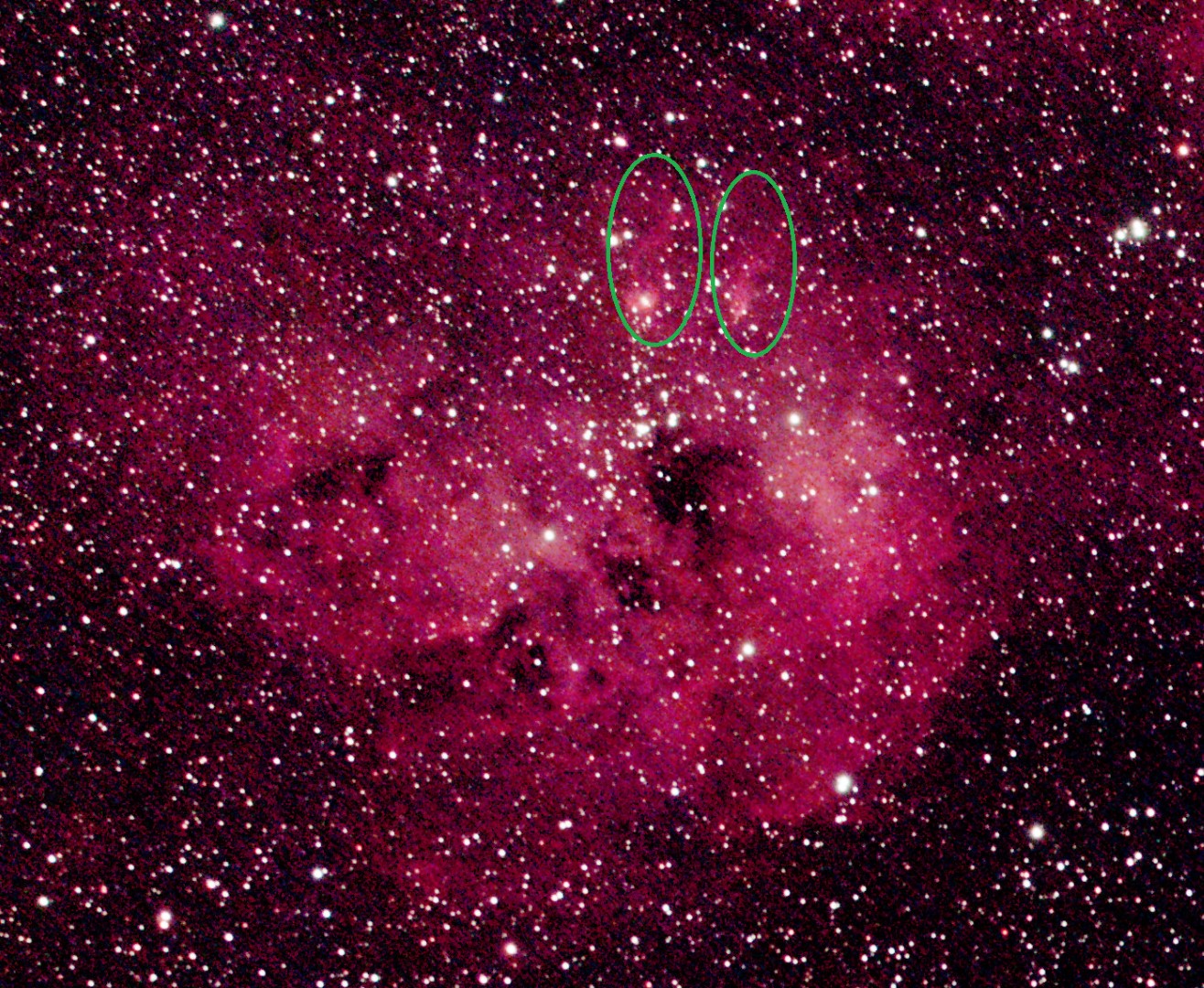
There’s a lot going on in and around the Auriga constellation and this winter I’ve been mainly imaging in this region, almost exclusively using the Samyang 135 widefield rig. Here with the whopping 7.50o x 5.67o field-of-view this set-up provides, it easily incorporates both emission nebulae IC405, AKA the Flaming Star Nebula and it’s nearby (visually) neighbour IC410, the Tadpoles Nebula, as well as much more.
- Hydrogen gas ionized by the central AE Auriga star produces the dominant strong red colour, which combined with the rippling dust and gas lanes that run through the head of IC405 leads to a ‘flame affect’ and thus the nebula’s popular nickname.
- The structures in IC410 are illuminated by radiation from the open star cluster NGC1893, located at the centre of the nebula. Hot, massive, young stars abound, especially around Simeis 129 & 130, the two tadpoles. These structures are ‘wriggling away’ from the centre of the nebula, because of the prevailing stellar winds and radiation pressure from the stars in NGC 1893.
This image is the cornerstone of a series of covering a wider area completed during January, which I intend to first present individually before, hopefully, bringing them together as an HOO mosaic later.

This image has been processed as two SHO versions of the Hubble Palette: (i) a basic mix above and (ii) using a dynamic mix ( main cropped image at top-of-the page). Once more I have been impressed by the ability of this small camera lens to produce exceptional detail and colours, but especially here with the starless Ha version of IC410, where the signature features or so-called tadpoles have been captured to great effect (see cropped starless Ha version of IC410 below).

| IMAGING DETAILS | |
| Object | IC 405 The Flaming Star Nebula + IC 410 The Tadpoles Nebula |
| Constellation | Auriga |
| Distance | 1,500 & 12,000 light-years |
| Size | Approx. 37’ x 10’ & 40’ x 30’ |
| Apparent Magnitude | +6.0 & +10 |
| Scope / Lens | Samyang 135 @f2.8 |
| Mount | SW AZ-EQ6 GT + EQASCOM computer control & Cartes du Ciel |
| Guiding | Sky-Watcher EvoGuide 50ED |
| + Starlight Xpress Lodestar X2 camera & PHD2 guiding | |
| Camera | ZWO1600MM-Cool mono CMOS sensor |
| FOV 7.5o x 5.67o Resolution 5.81”/pix Max. Image Size 4,656 x 3,520 pix | |
| EFW | ZWOx8 EFW & 31mm ZWO LRGB & 7nm Narrowband filters |
| Capture & Processing | Astro Photography Tool + PHD2 + PixInsight v1.8.9-1 |
| Image Location & Orientation | Centre: RA 05:19:54.329 DEC +33:47:12.699 Right = North Top = East |
| Exposures | 24 x 300 sec Ha & OIII, 18 x 300 sec SII Total Integration Time: 5 hr 30 min |
| @ 139 Gain 21 Offset @ -15oC | |
| Calibration | 10 x 300 sec Darks 20 x Flats & Flat Darks |
| Location & Darkness | Fairvale Observatory – Redhill – Surrey – UK Typically Bortle 5 – 6 |
| Date & Time | 2nd & 9th January 2023 @ +18.30h |
| Weather | Approx. <=2oC RH >=80% 🌙 +80% |

